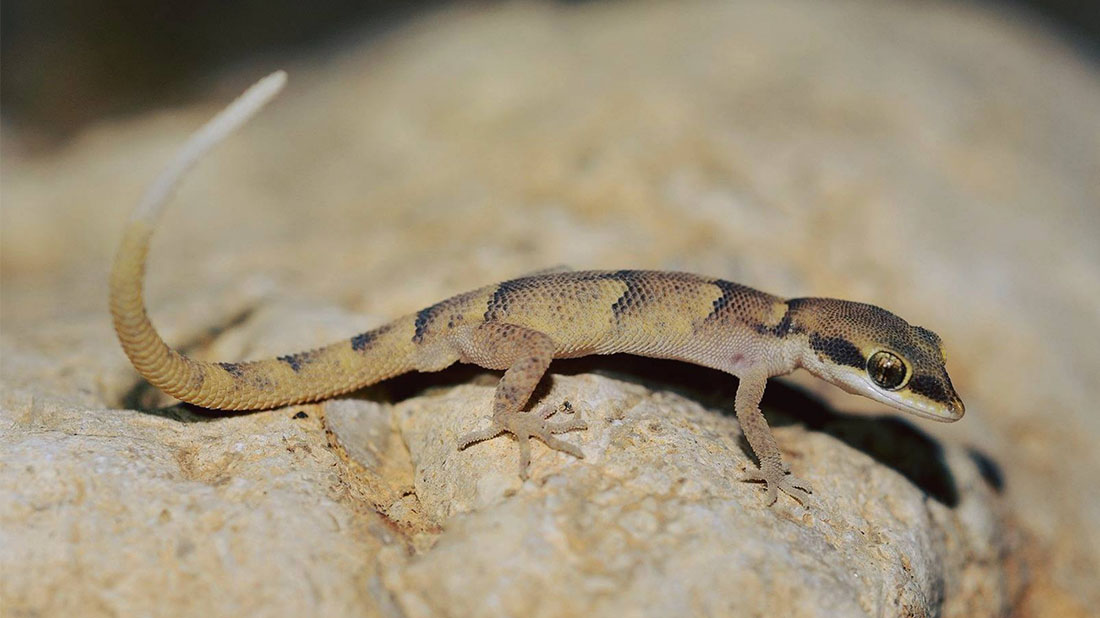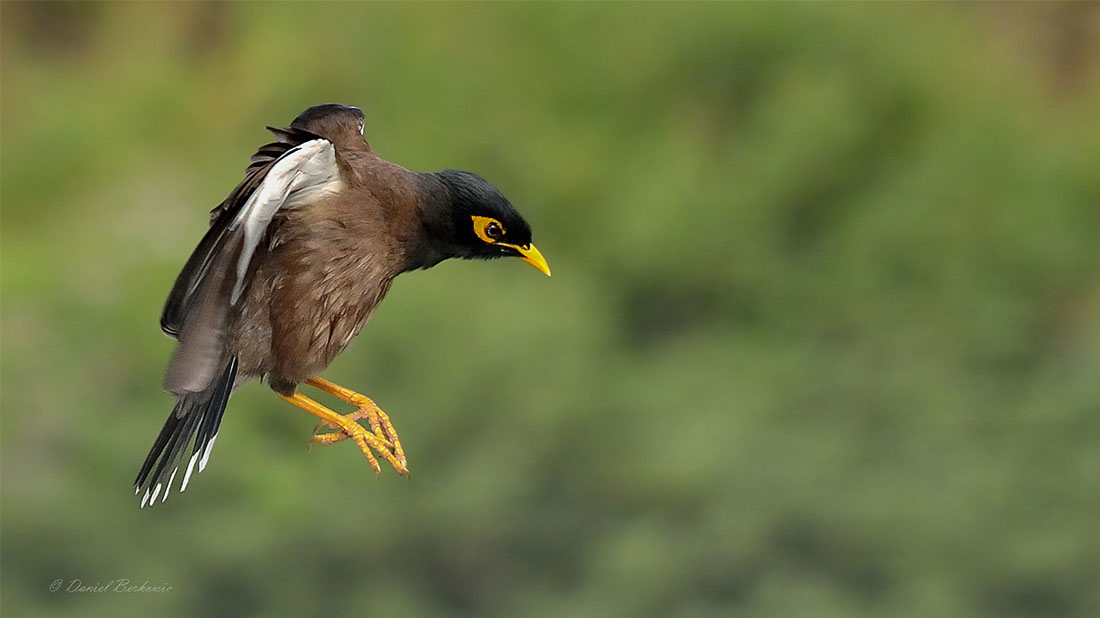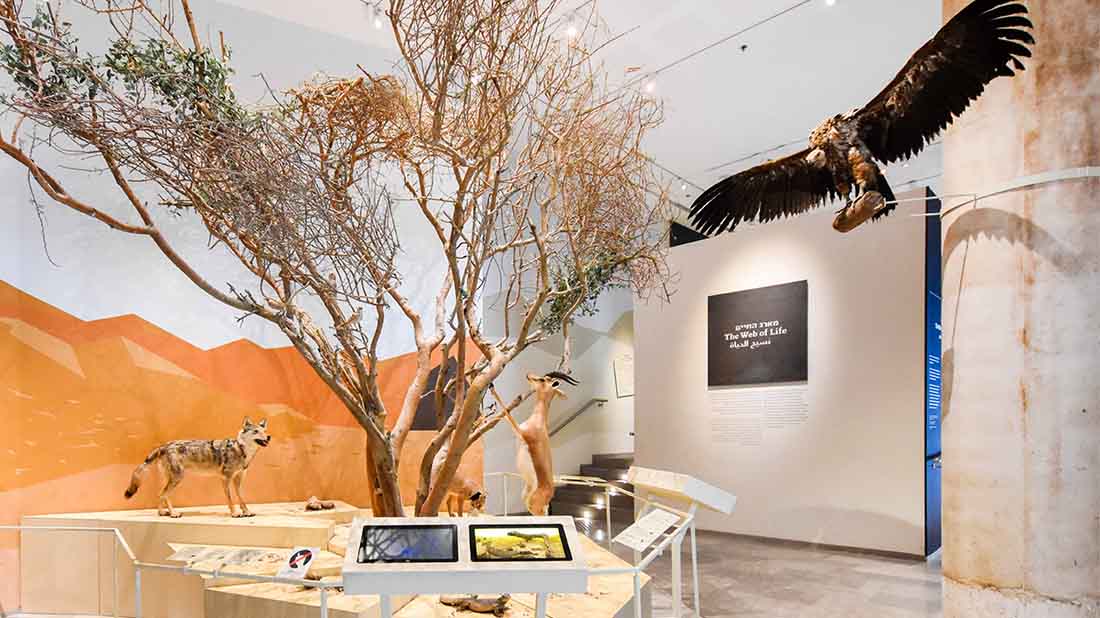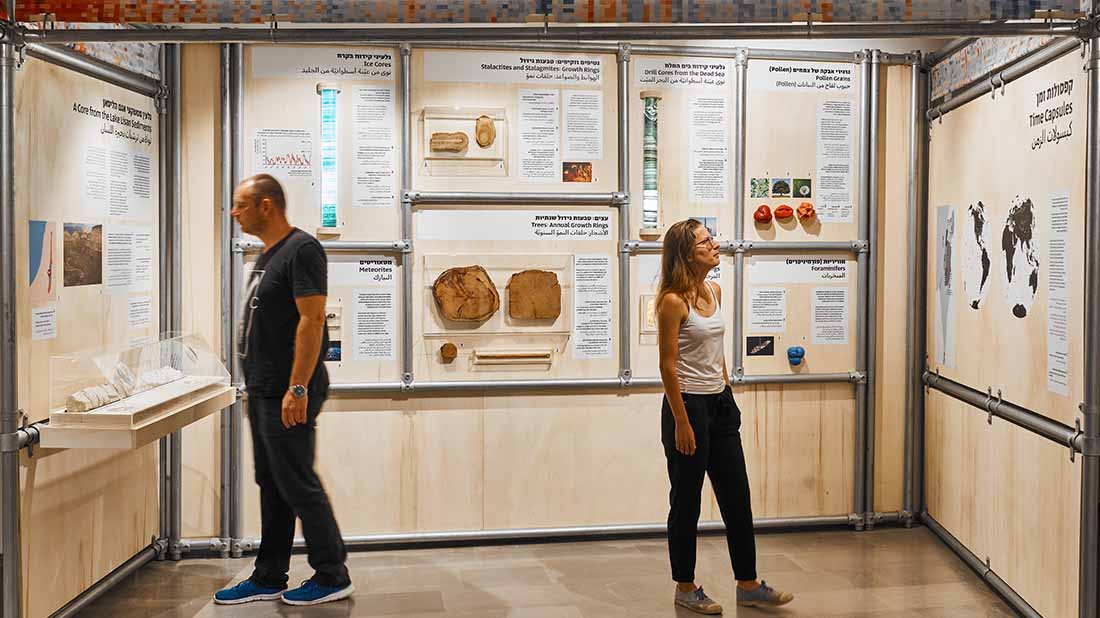Behind the walls and doors of natural history museums, one of the most important tasks takes place: describing species new to science. This is the story of some of the new species that were discovered in the past year (2022), in the sea and on land, and were described by researchers working at the Steinhardt Museum of Natural History.
Stories about the discovery and description of a new species are somewhat similar to birth stories: happy, full of suspense, and highly eventful. In rooms full of microscopes and other sophisticated devices sit the best taxonomists, scientists who classify and describe all living organisms and give them new names. When these species spread throughout the world, proudly bearing their new names, every scientist who wants to study them or write about them will have to use the scientific names given to them.
So how do scientists determine the scientific name of the new organism they have described? According to tradition, they cannot name it after themselves, so they must be more creative. They can choose to name the new species after a known scientist or a loved one, or include a description of the new species (color, size etc.) in its name. All the scientific names are written in Latin (genus name followed by species name), since this was the official language used by scientists in academia from the beginning. For this reason, the entire approach to taxonomic classification of living organisms, as determined by Carolus Linnaeus, is still in this language.
Naming with some Imagination
There’s a group of researchers at the museum who describe new species the way Messi scores goals at the World Cup—the entomologists! While the taxonomists who describe vertebrates open a bottle of champagne after a year of describing one species new to sciences, the insect researchers have already described (only in 2022) 40 species entirely new to science and given them new names.
Sometimes the rate of describing species can be even higher, reaching 80 species per year! Just this year Prof. Netta Dorchin described 11 species of gall midges. What are gall midges? They are mosquitoes that form galls on plants. What are galls? Galls are growths on a plant within which the gall midges develop and feed.
Galls come in a wide range of beautiful shapes, each of which may look completely unique. Netta discovered many species of gall midges, and chose to give them names according to the traits of the galls they form, since the shape of the gall is unique to the species of gall midge that forms it.
One of the many species of gall midges is Ruschiola bubonis. In some species of gall midges, the pupa has typical “horns” on its head that are used to break out of the gall before the adult emerges (the adult is too delicate to emerge from the gall by itself). These horns reminded Prof. Netta Dorchin of the feather tufts of owls. The name Bubo in Latin is a large genus of owls, thus Netta chose to call this species of gall midge by the name R. bubonis.
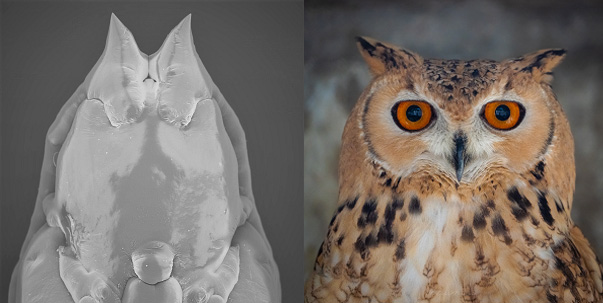
On the right: portrait of a Pharaoh eagle-owl, Bubo ascalaphus; on the left: a scan of the pupa of the gall midge, Ruschiola bubonis
Another group in which new species were discovered is the mayflies. This year, the entomologist, Dr. Zohar Yanai described two new species of mayfly (yes, yes, the same mayflies that Shahar Even Tzur sings about). The species, Alainites gasithi, is found in the Golan and the Hula Valley. Zohar named it after Prof. Emeritus Avital Gasith, from the School of Zoology at Tel Aviv University. From now on, the name of Prof. Avital Gasith will be borne by a species of mayfly whose adult life lasts for only a few months to a few days! It’s a great honor to be named after a species that gets so much done in its life within such a short time.
The species, Alainites bengunn, is found only on one isolated island, Sardinia; Zohar named it after Ben Gunn, the half-crazy man whose pirate friends abandoned on a desert island in Treasure Island. Yes, you can even call new species after literary characters. We’re not sure if the new species of mayfly is half-crazy like the pirate whose name it bears, but we haven’t received any further details about this species’ psychological state.

The species, Alainites gasithi, described in the paper by Zohar Yanai and his colleagues, and named after Prof. Avital Gasith
The Bee Empire
Israel is considered a biodiversity hotspot for bees; its limited area is home to about 1,100 known species of bees. Most of these species are solitary. In other words, they do not have a queen or workers; rather, each female builds her own nest and stores food in it for her progeny. Solitary bees do not produce honey but they play a most important role in pollinating wild and cultivated plants. This year, the national number of bee species rose by about 2% following the description of 23 new species by Dr. Gidi Pisanty, all in the genus Andrena. Bees from this genus are all ground-dwelling, and many of them specialize in collecting pollen from a very limited group of plants. Among the new species that were described, four species were identified as specializing on Euphorbia, Veronica, Ornithogalum and Gagea, and their scientific names reflect the names of these plants. Israel is particularly rich in Andrena species (about 220 species), and in the museum collections there are at least another 25 species from Israel waiting to be identified and described. We still have much work ahead of us!
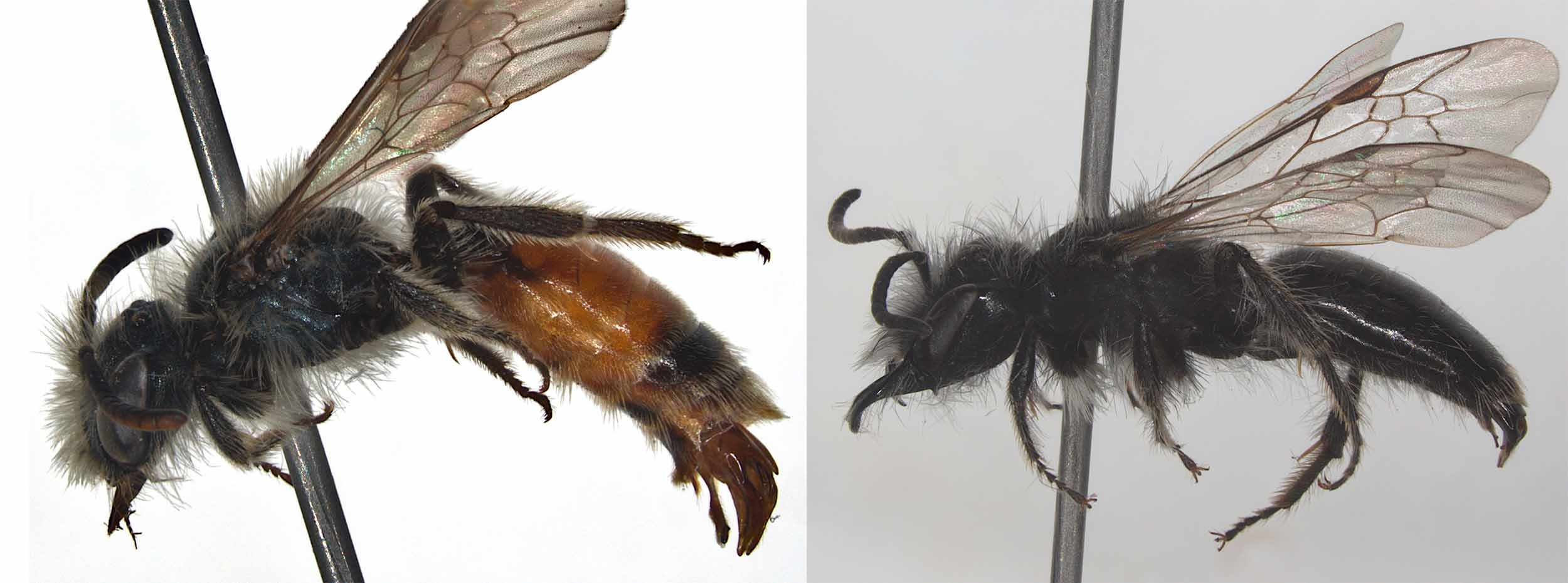
Two of the Andrena species described this year by Dr. Gidi Pisanty. These individuals, which were discovered this year, are preserved in the bee collection at the Steinhardt Museum of Natural History. On the right: Andrena ornithogali; on the left: Andrena veronicae
…”And then the Old Lady Split in Two…” (from the performance by Asi and Guri, Aliens, 2004)
Taxonomists at the Steinhardt Museum always get excited when they find a new species, but some discoveries give a new meaning to all existing knowledge. In Prof. Shai Meiri’s lab, scientists discovered that Natterer’s gecko, which is common in Israel’s desert region, should in fact be divided into two separate species: one is common throughout Israel’s deserts, while the other is restricted to the Sinai region and the southern Arava Valley. Division of an existing species of gecko into two species required in-depth morphological and genetic study, and collection of samples from the field. It was found that geckos with the more restricted distribution have a longer form while the common geckos have a “chubbier” form. Now we can examine older gecko samples preserved at the museum in light of the morphological and genetic variation.
The less-common species in our country retains the original name from before the division, Natterer’s gecko, Tropiocolotes nattereri, while the common species, which was described as a new species, was named Tropiocolotes yomtovi after Prof. Emeritus Yoram Yom-Tov from the School of Zoology at Tel Aviv University. Both species can be found in Eilat and the southern Arava, where their distributions overlap. The paper published on the division of the species was written, inter alia, by two of the museum’s employees—Prof. Shai Meiri and Dr. Karin Tamar—as well as Erez Maza, who was a museum employee until recently. Marco, a post-doctoral fellow in Prof. Shai Meiri’s lab who led the research on the division into two species, relates that in a journey to the south of Israel to collect samples, Shai wondered if it was worth going further south to search for additional geckos. Marco reveals that Shai’s insistence on continuing to the Yotvata region led to the discovery of additional individuals similar to those in Sinai. This insistence paid off because it proved that the distribution of the species known from Sinai also includes the southern Arava region; this was not known to us beforehand. This story emphasizes that finding a new species requires not only hard work, but also tenacity and a lot of luck.
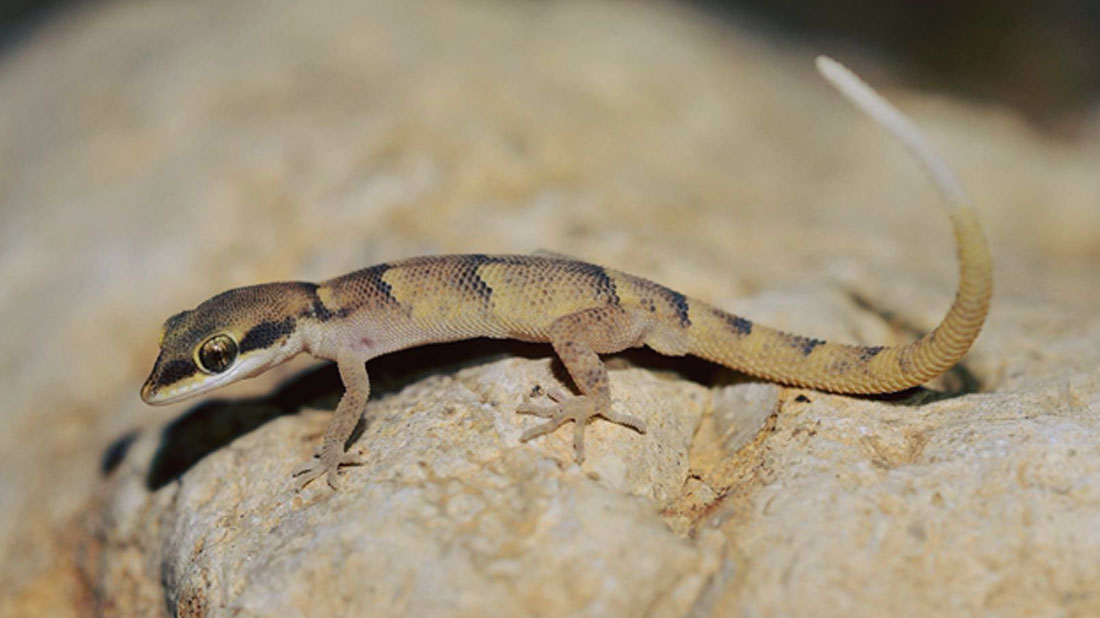
A gecko from the Eilat region, probably of the species, Tropiocolotes yomtovi, named after the zoologist, Prof. Emeritus Yoram Yom-Tov. Photo: Daniel Berkowitz
Not the Mediterranean Sea, the Red Sea…It’s Not a Crustacean, It’s a Fish
Dr. Menachem Goren and Dr. Nir Stern published a paper on a species new to science: the Steinhardt shrimp goby (guess after whom it’s named…), with the scientific name, Cryptocentrus steinhardti. The shrimp goby is a fish (yes, it’s very confusing) that lives in the Mediterranean Sea together with a snapping shrimp (hence, shrimp goby). The shrimp, whose eyesight is weak, digs burrows and the fish joins it and lives in them. Most of the time the fish lies at the burrow’s entrance and waits for prey, while the shrimp is busy building the burrow and collecting small food items from the sand. Each time it emerges from the burrow it lays a long feeler on the fish’s dorsal fin. When a predator approaches, the fish signals the danger to the shrimp via fin movements, and the shrimp returns quickly to the depths of the burrow. Such partnerships are known from the Indian Ocean and its extensions (including the Red Sea).
The discovery of this species, which comes from a family of tropical species, in the Mediterranean Sea is not surprising. We know that over 100 fish species have invaded the Mediterranean Sea from the Red Sea via the Suez Canal. The interesting story behind the discovery of this fish in the Mediterranean Sea is that it was not known previously from the Red Sea. Only after publication of the paper did scientists report its existence in other locations in the Mediterranean Sea and the Red Sea.

Steinhardt shrimp goby, Photo: Rafi Amar
Building a Puzzle over 30 Years
Sponges are known as an important source of many natural materials that are used in medicine, cosmetics, biomimicry (nature-based innovation) and more. Scientists throughout the world are always searching for the next natural material that may be used as a medication for cancer or make our skin look a few years younger. One of these scientists is Prof. Micha Ilan.
Important natural materials were discovered in a species called Negombata magnifica, but it was found that different individuals of this sponge contain different materials. Micha decided to examine this phenomenon in depth and quickly noticed that this sponge demonstrates phenotypic plasticity. In other words, different individuals of the same species, living in different areas, and sometimes in the same area, can have a different appearance and different traits. This plasticity (“flexibility”) probably allows them to live in a range of marine habitats. In the case of this sponge, Micha found branched individuals and round individuals. But perhaps these are just different-aged sponges? Think about us, humans: a boy and an old man look and behave very differently, so maybe this polymorphism (presence of a species in more than one form) depends on the age of the sponge? Does this sound complicated? Certainly! In the next stage, research students in Micha’s lab found that the branched form and the round form reproduce at different times and contain different natural materials, raising the suspicion that these were actually two different species of sponge!
The division of this beautiful sponge, Negombata magnifica, into two species took 30 years! Each time another research student discovered another piece of the puzzle that proved these were different species. Eventually, Lilach Reichman, a PhD student in Micha Ilan’s lab, managed to put all the piece of the puzzle together and show undoubtedly that these were definitely two separate species, gathering together all of the previous studies and adding her part, with the assistance of the professional staff of the museum. The description of the species included the use of diverse methods: morphological (form and structure), molecular, natural materials composition, reproductive data and even the microbiome (bacteria living in symbiosis with the sponge). The paper, which was accepted in December 2022 to the journal, Coral Reefs, describes a new species named Negombata rotundata—due to its round form. Skilled divers will be able to see it in the waters of the Red Sea near Eilat, assuming they don’t mix it up with the first species from which it was separated….Confused? Wait for the next sponge to be discovered next year.
And now we’ll reveal another little secret: for many years the sponge was called Negombata tomata, and this was the original name given to it. But the paper’s authors really did not like that name, thus it was changed to Negombata rotundata.


